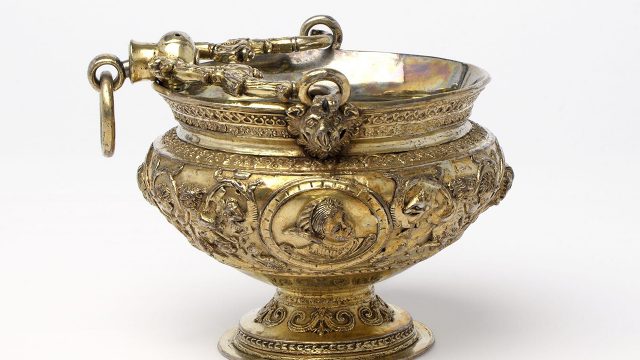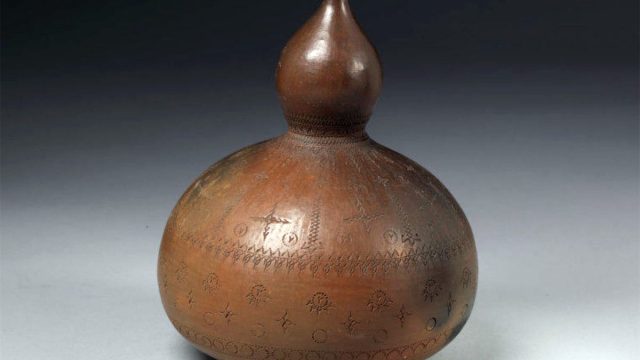The V&A holds an extensive collection of lacquered objects from Japan, China and Korea. Nearly 4000 objects from these collections not currently on display are in storage in West London. As the V&A prepare to leave our storage facility, these objects are being prepared and packed to be transported to their new home at V&A East Storehouse.
Close to half of the objects are Japanese inro or netsuke. Inro are small portable wood or lacquer containers formed of several interlocking compartments. Netsuke are decorative carved bone or boxwood toggles threaded on to cord attached to the inro. Inro and netsuke were worn by men, hanging from the obi sash of kimono, during the 17th–19th centuries, but fell out of usage when Western style dress became ubiquitous.
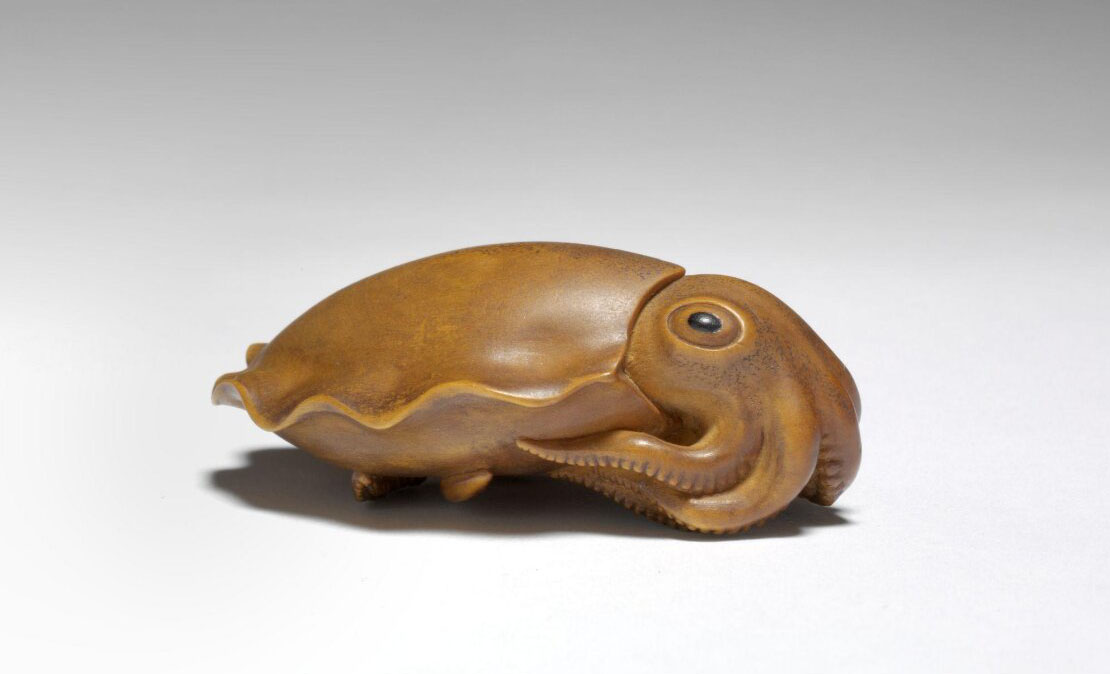
Asian lacquer is produced from sap of the hardwood tree Toxicodendron vernicifluum (as the name implies, this sap is an irritant in its raw form). The sap was heated to remove impurities and excess water, then layers of the resulting lacquer were applied to a wooden base. Rather than drying, Asian lacquer sets in a humid environment.
Unadulterated lacquer is dark brown, and historically had a limited colour palette utilising red cinnabar (mercury sulphide ore) and black pigment made from iron oxide. Gold or silver decoration was added in the form of foil applique, or powders of varying degrees of fineness embedded in the upper layers of the lacquer. Other decorative elements included inlays, utilising iridescent mother of pearl from abalone shell, or sea turtle shell (often incorrectly described as ‘tortoiseshell’).
The inlaid surface decoration of inro is very susceptible to losses and damage. The lacquer itself is fragile and can be cracked or abraded. The wooden, base layer of objects can shrink or warp, causing the lacquer layers to detach from it and sometimes crack or break away. It is extremely sensitive to ultra-violet (UV) light, which causes damage on a molecular level. The natural oils and acidity of human skin also attack the surface of lacquer, so we wear gloves during any handling. Lacquer was prized for its sheen and lustre, but handling or exposure to daylight can dull the surface irretrievably. We consider all these factors when handling and packing our lacquer objects.

Our inro had been stored in plastic Gratnells drawers in cupboards, and were lying on sheets of Plastazote, a chemically stable foam. The loose netsuke were contained in individual acid-free tissue paper ‘nests’, clumped in drawers. Both the inro and the netsuke were grouped thematically for storage by curator Masami Yamada. The decant team at Blythe House approached the process of packing for the netsuke and inro to fulfil a twofold role – allowing these fragile objects to travel safely, and then for their ongoing storage at V&A East. As the collection will be on public view, it’s important that the storage be aesthetically pleasing! Our packing needed to be robust, to withstand the move, and to last once the objects were in-situ at V&A East. Chemically stable packing materials were vital, to ensure that the objects were not damaged by them breaking down or reacting with environmental factors.
Our technicians had to be time efficient, reflecting the 757 inros and 884 unattached netsuke that required packing, as well as cost effective. Packing was developed with the support of furniture conservator Dana Melchar, who studied lacquer making, preservation and restoration at the Mejiro Institute in Tokyo under Kazumi Murose, National Living Treasure for Maki-e.
For the netsuke, we discussed a solution that entailed laser-cutting niches in the foam to the dimensions of the objects by a specialist company, but rejected this approach as the measuring process would require extensive handling of the objects.

The team eventually decided to pack the netsuke in custom-cut holes cut into 50mm sheets of Plastazote foam, laid in the drawers the netsuke were stored in. We made drilled out the holes with saw drill bits. A thinner layer of foam was then attached to the underside of the cut Plastazote. Each netsuke was nested in tissue paper pushed into the holes, immobilising and protecting them. The netsuke are held in position with cotton tape and pins, which will be removed on arrival at V&A East. The drawers were then lidded with sheets of Correx (corrugated plastic), tied in position. Lacquered and painted netsuke, which have surfaces vulnerable to damage through abrasion, were nested using synthetic wadding lined with Bondina tissue, a conservation material that has a non-abrasive, non-static surface. The layout of the trays was measured carefully using a grid stencil created by a technician.
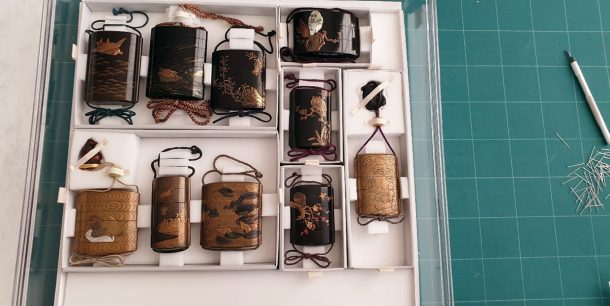
Inro were packed in small cardboard archival boxes. These come pre-cut flat packed, and can be assembled quickly and easily. The inro, either singly or in groups of two or three, were matched with the most appropriate of four box sizes. The boxes were lined with Plastazote and small Plastazote blocks were cut and glued into position, holding the inro in place. This blocking technique allowed the inro to be immobilised while keeping any contact with the delicate surfaces to a minimum. Each box was then grouped in a custom-made Correx tray placed back in the Gratnell drawers the inro were originally stored in. As with the netsuke, these drawers were lidded with Correx.
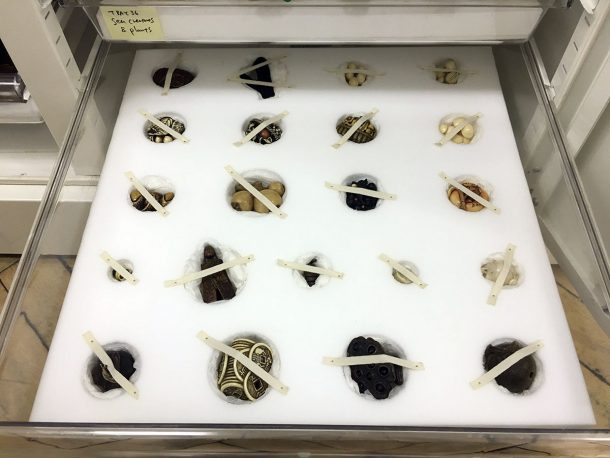
The inro and netsuke are now secure for transit, and attractively stored and displayed for visitors to enjoy in the future.
